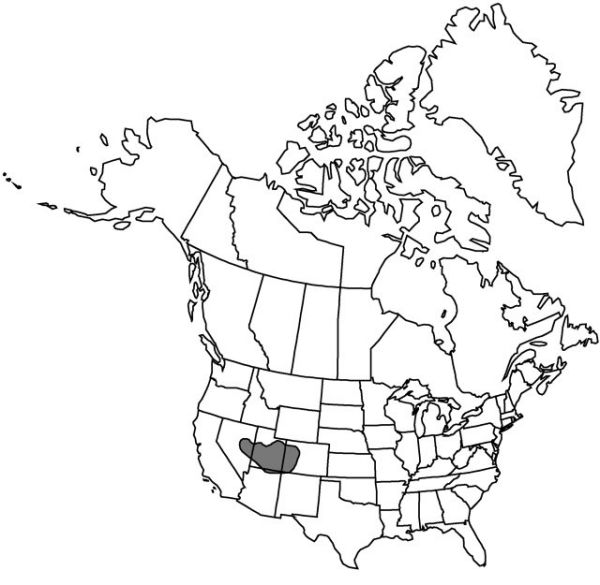Difference between revisions of "Yucca harrimaniae"
Rep. (Annual) Missouri Bot. Gard. 13: 59, plates 28, 29, plate 83, fig. 10, plate 93, fig. 1. 1902.
FNA>Volume Importer |
imported>Volume Importer |
||
| (One intermediate revision by the same user not shown) | |||
| Line 6: | Line 6: | ||
|place=13: 59, plates 28, 29, plate 83, fig. 10, plate 93, fig. 1. 1902 | |place=13: 59, plates 28, 29, plate 83, fig. 10, plate 93, fig. 1. 1902 | ||
|year=1902 | |year=1902 | ||
| + | }} | ||
| + | |special_status={{Treatment/ID/Special_status | ||
| + | |code=E | ||
| + | |label=Endemic | ||
}} | }} | ||
|basionyms= | |basionyms= | ||
| Line 57: | Line 61: | ||
|publication title=Rep. (Annual) Missouri Bot. Gard. | |publication title=Rep. (Annual) Missouri Bot. Gard. | ||
|publication year=1902 | |publication year=1902 | ||
| − | |special status= | + | |special status=Endemic |
| − | |source xml=https:// | + | |source xml=https://bitbucket.org/aafc-mbb/fna-data-curation/src/2e0870ddd59836b60bcf96646a41e87ea5a5943a/coarse_grained_fna_xml/V26/V26_900.xml |
|genus=Yucca | |genus=Yucca | ||
|species=Yucca harrimaniae | |species=Yucca harrimaniae | ||
Latest revision as of 21:18, 5 November 2020
Plants cespitose, forming dense to open colonies, acaulescent or short-caulescent; rosettes usually small, asymmetrical or symmetrical. Stems to 0.3 m. Leaf blade pale green, linear- or spatulate-lanceolate, concavo-convex, widest near middle, 30–50 × 1.8–4.3 cm, rigid, margins entire, filiferous, white or brown, apex pungent. Inflorescences racemose, rarely paniculate proximally, arising within or just beyond rosettes, 3.5–7 dm; branches, when present, few, short; bracts erect, proximal to 20 cm, distal 5–8 cm; peduncle scapelike, 0.1–0.2 m, less than 2.5 cm diam. Flowers pendent; perianth broadly campanulate; tepals distinct, yellow or greenish yellow, usually tinged purple, broadly lanceolate, 4–5(–5.3) × 1.6–3.4 cm; filaments 1.6–2.8 cm; pistil pale green, 2.7–3.8 × 0.4–0.8 cm; style pale to bright green, 9–13 mm; stigmas lobed. Fruits erect, capsular, dehiscent, cylindrical, usually deeply constricted toward center, 3–5(–5.5) × 2–3 cm, dehiscence septicidal. Seeds dull black, thin, 5–8 × (3.5–)4–8 mm.
Phenology: Flowering spring–early summer.
Habitat: Desert slopes, foothills, and plateaus in limestone and volcanic outcrops
Elevation: 1000–2500 m
Distribution

Ariz., Colo., Nev., N.Mex., Utah.
Discussion
S. D. McKelvey (1938–1947) included Yucca neomexicana in Y. harrimaniae, as did J. L. Reveal (1977c), who gave it varietal status. K. H. Clary’s (1997) DNA studies contributed to a consensus tree in which Y. harrimaniae and Y. neomexicana are discrete and widely separated. These taxa are allopatric, separated by the San Juan Mountains of Colorado, and this along with Clary’s evidence supports their recognition as separate species.
Selected References
None.